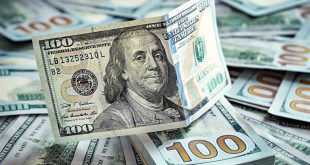The Euro has jumped to 1.1000 following the final US GDP that appears disappointing. US economic growth revised down to 4.9% in the third quarter from the previous 5.2% estimation.
The focus is now on the looming US PCE Price Index which investors eagerly await to get more direction on the Fed’s policy outlook.
The Euro extended gains on a thin pre-Christmas session to reach session highs at 1.1000, following a downward revision of the US third quarter’s Gross Domestic Product.
Recent data by the US Bureau of Economic Analysis revealed that the US economy grew at a 4.9% yearly rate, down from the preliminary estimations of a 5.2% increase.
Apart from that, the Philadelphia Fed Manufacturing survey signaled a further-than-expected deterioration in the region´s business conditions and the Personal Consumption Expenditures declined against expectations.
These figures have offset the positive impact of jobless claims data, endorsing the narrative of a soft landing and boosting hopes of the Federal Reserve’s (Fed) rate cuts in early 2024. This scenario increases the interest on Friday’s PCE Price Index, which is for further info about the timing of the US Central Bank´s next move.
US Q3 GDP revised to a 4.9% year-on-year growth from the previous 5.2% estimation. The Philadelphia Fed Manufacturing index dropped to -10.5 from -5.9 in November; the market expected a moderate improvement to -3.
US Personal Consumption Expenditures are expected to have eased to 2.6% in Q3, the consensus anticipated a 2.8% reading, unchanged from Q2. US Jobless claims increased by 205K from 203K in the previous week, well below the 215K expected.
Fitch ratings anticipate slower global growth in 2024 and rate cuts by the Fed, the ECB, and the BoE.
US data has hammered the Dollar sending the US Dollar Index to test multi-month lows at 101.80.
Investors are pricing a nearly 75% chance of a quarter-point rate cut in March followed by another one in May, according to data by the CME Group Fed Watch Tool.
The main focus no is the US PCE Prices Index, due on Friday. The Fed’s preferred inflation measure is seen dipping below the 3% year-on-year rate for the first time in almost three years. A soft PCE inflation reading would increase bearish pressure on the USD.
Technically; the Euro’s pair has regained bullish momentum to reach the 1.1000 psychological level, with the US Dollar index increasing bearish pressure. Euro bulls, however, are likely to be challenged at the 1.1010 area with investors reluctant to place significant bets against the USD ahead of Friday’s US PCE inflation data.
Above 1.1010, the next targets would be the August high at 1.1060, and the July 24 and 27 high at 1.1150.

 Noor Trends News, Technical Analysis, Educational Tools and Recommendations
Noor Trends News, Technical Analysis, Educational Tools and Recommendations




